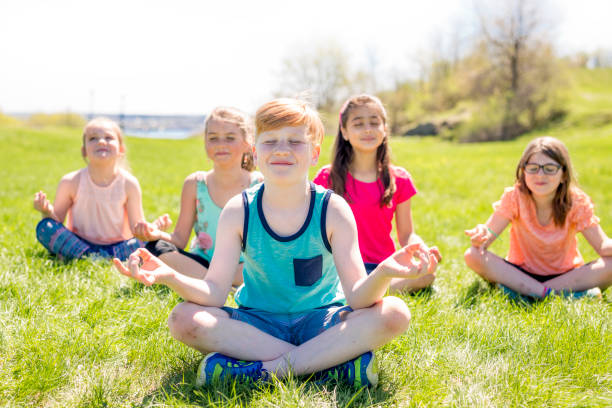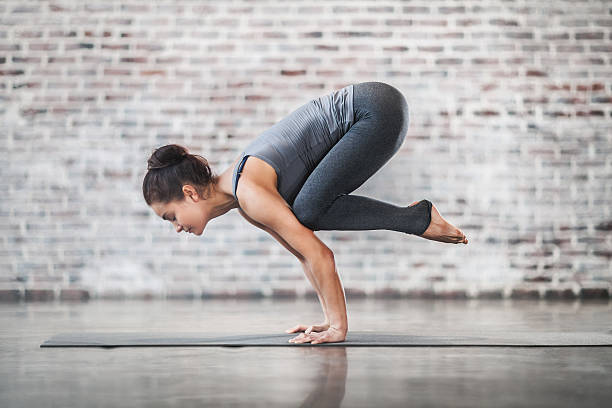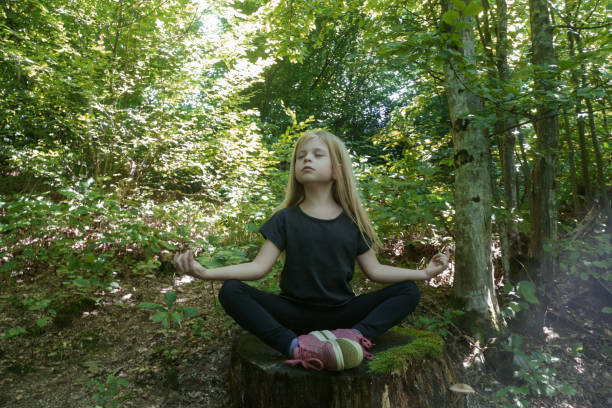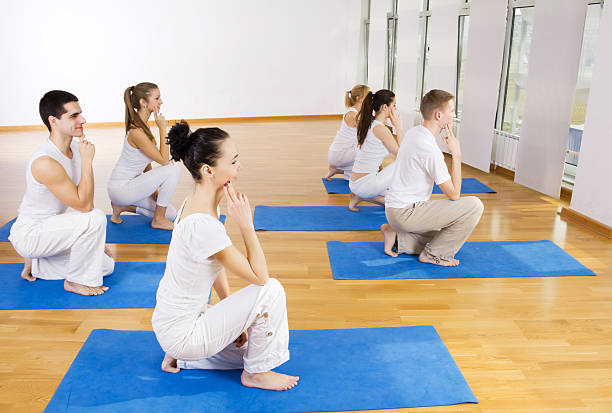
We go through moments in life that make us worried, stressed, and very anxious…so anxious that our thought patterns are distorted, or we become immobile and don’t want to take action.
Yoga can help you?
We often feel a sense of fear and reluctance and believe that there is no escape from our stressful situations. Yoga poses that are incorporated into regular practice can reduce anxiety.
Yoga is about deep breathing, postures, and stilling your mind. This is a practice that’s tailored specifically to you. You are not competing or listening to external noise. Your anxiety-relieving practice should consist of movements that are calming, allow you to stay in the present moment without feeling rushed or hurried, and not challenge you.
These movements can help to reduce anxiety. They are easy to do, and anyone can practice them. You should have a comfortable yoga mat, clothing, and space. There shouldn’t be any distractions, and you should use essential oils and peaceful music if you wish. Your yoga practice won’t be as comfortable if you don’t have the right space and setup. Always remember to take long, full breaths when you are practicing.
Six Yoga Poses to Help Reduce Anxiety
Here are six poses you can do every day to calm your racing thoughts. Spend at least 3 to 5 minutes in each pose to get the most benefit. Yoga is not the only way to reduce anxiety. However, it can be a great part of your self-care routine and a good way to nurture both body and mind.
1. Legs up the Wall
Place your mat near a wall so you can stretch out your legs.
Place your buttocks closest to the wall. You can turn easier by curling to one side and pressing your hip against the wall.
Your palms should be facing upward.
Use an eye pad that is scented, or close your eyes. Focusing on your breath will help you to clear your mind.
Here, take five deep breaths: 5 counts for inhalation and five counts for exhalation. Hold this pose as long as possible to let the tension out. Here, your heart rate usually slows immediately.
Tip: To help you keep your back flat on the floor while your legs are raised, place a bolster beneath your hips. You can also listen to relaxing music or natural sounds.
Elevating your legs above your heart can help to relieve tension and stress.
2. Child’s Pose
It would be best if you used a mat that is thick enough to support your knees.
Your knees can be spread out in a V shape or together.
Stretch your arms as far forward as you can.
Close your eyes and soften, release, relax, and let go. Release your mind, head, arms, and shoulders.
Try not to hold your muscles in tension. With each deep breath, allow yourself to melt even more. This pose will help you to find peace.
3. Seated Forward Bend
Sit up straight on your mat, with your legs extended in front. Your sitting bones should be connected to the mat by moving your seat side-to-side.
Stretch your heart to your toes and reach your arms with a long back.
Stretch your body as far as you can without feeling any pain.
You will stretch your hamstrings if you maintain a flatback. The stretch will be more effective if your back is round. Both are useful and effective. You can choose whichever suits you best at this time.
Your toes can be pointed or flexed. You can try both and see which one is best for you. After a few moments, roll slowly up.
4. Cat/Cow Pose
All fours, with hands under shoulders and knees beneath hip bones. Keep your back in a neutral position.
Cow Pose is achieved by inhaling, lowering your belly, drawing your shoulder blades into a circle, and lifting your gaze. Cat Pose is achieved by exhaling, pressing your palms together, and rounding your back as you separate your shoulder blades. Follow your breath to continue these movements.
Inhale and exhale in rhythm with the movement.
Slowly move your spine to feel each vertebra.
If done correctly, this is a very relaxing and releasing set of postures. Close your eyes and focus on connecting your movements to your breathing.
5. Standing Forward Bend
It is an extremely beneficial pose and can be done anywhere since no mat is needed. You can do it in the office, when shopping, or before any activity that causes anxiety. This exercise releases tension and gives you more energy.
Stand with feet together or at a hip distance apart.
As you lift your arms, keep your spine elongated. Then, hinge your hips forward as you reach down to your toes.
You can let it all go and hang as if you were a ragdoll or grab opposite elbows using opposite hands.
You will feel the tension release in your shoulders, upper back, and head.
Close your eyes, take a deep breath, and let go of all thoughts. Hold for as long as desired.
6. Corpse Pose
This is the pose that’s easiest for your body to perform but most difficult to master mentally and spiritually.
Lay down on your mat, arms at your sides, palms facing up. Relax your legs and turn your feet towards the mat’s edges.
If you are feeling tension in your lower back, place a pillow between your knees.
Close your eyes and release tension from your face.
Deep breathing is important to relax you.
Tip: To determine whether you are relaxed, clench or tighten your whole body for a few seconds, then release.
You will return to it later. You can return to the topic later.
You will soon find that these poses are second nature, and you can use them whenever you need to. You can do yoga at home or wherever you have the physical and emotional space to do so.
Do not forget to focus on your movements and practice deep breathing. Anxiety does not last forever, and you can manage it to return to calmness and contentment.


